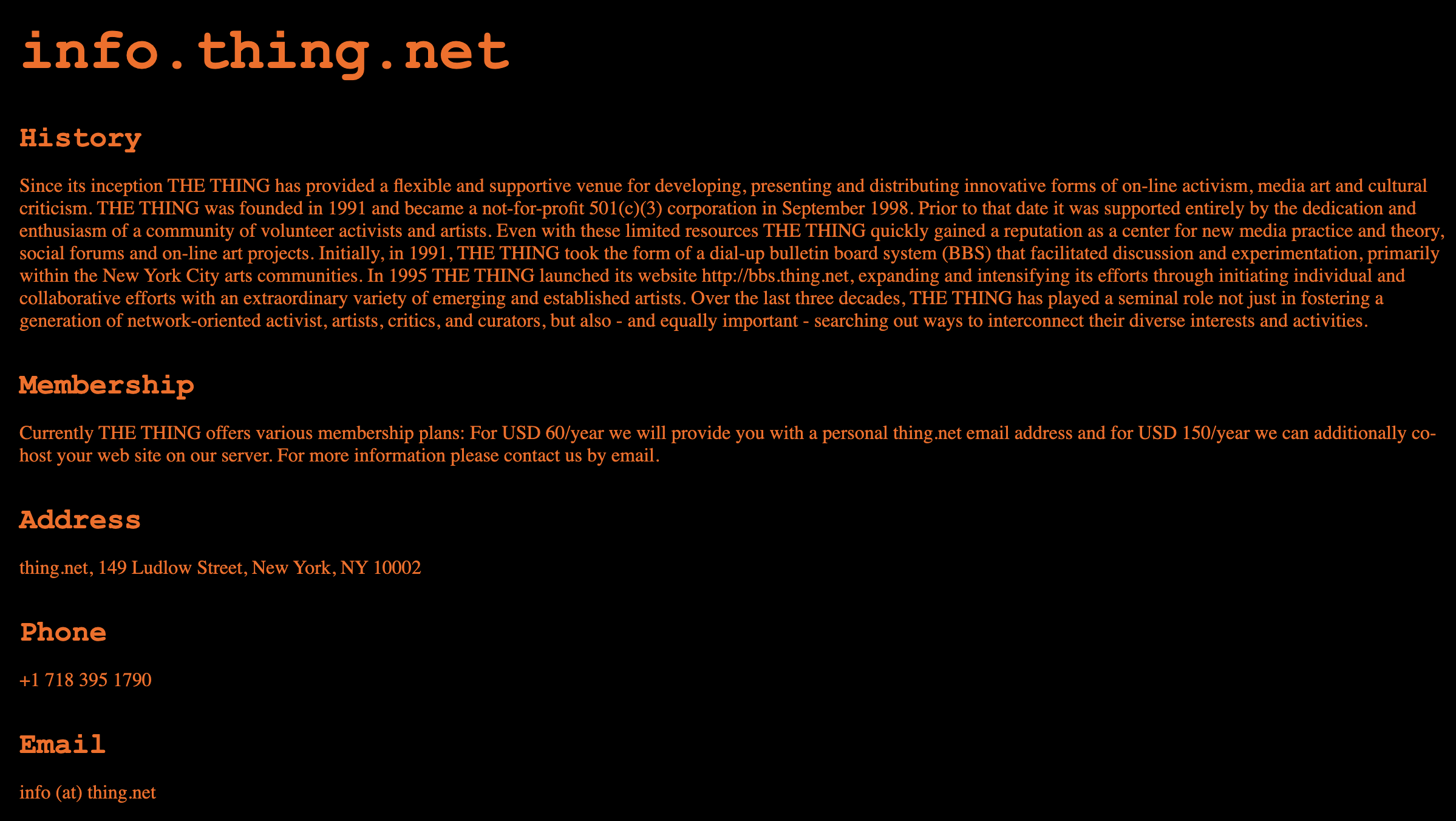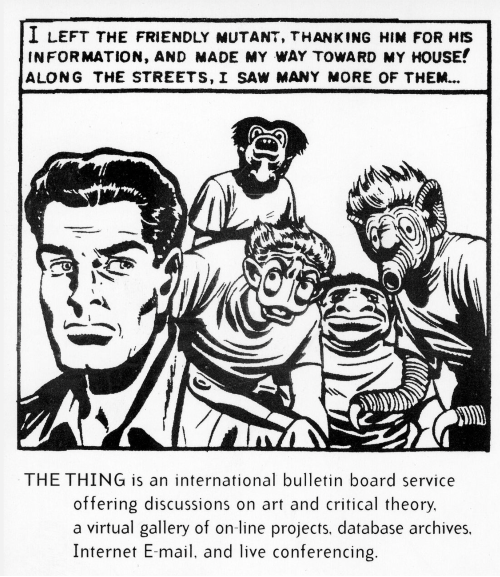The OG "Thing"



History of "The Thing"
The Thing would serve the New York area as one of the original pre-web electronic hubs for net artists. It became a virtual community center, a new media museum, and eventually an international network of creatives communicating in the nascent online world.
"The whole meaning of it would come out of the relationships between the people and not the modernist ideal of the single hero artist that the market loves,"
Most of the local BBSes in New York City at the time were geared toward programming and technical discussions, not art. But Staehle was intrigued by the empowering dynamics of early online communities. "It was sort of my first whiff of the open-source culture I'm so much in love with these days.”
More than a vessel, The Thing was conceived as a contextual art project in and of itself. Staehle modeled it in part after Fluxus pioneer Joseph Beuys' idea of "social sculpture," a kind of inclusive, ever-evolving collaboration with utopian undertones — a snug fit for emergent forms of networked communications — which Beuys would describe as "A social organism as a work of art … Every human being is an artist who – from his state of freedom... learns to determine the other positions of the total art work of the future social order.”
Bulletin Board Systems
- Instead, the Crackdown of 1990 would concern itself with the computerized version of forbidden data. The crackdown itself, first and foremost, was about bulletin board systems. Bulletin Board Systems, most often known by the ugly and un-pluralizable acronym "BBS," are the life-blood of the digital underground. Boards were also central to law enforcement's tactics and strategy in the Hacker Crackdown.
- A "bulletin board system" can be formally defined as a computer which serves as an information and message-passing center for users dialing-up over the phone-lines through the use of modems. A "modem," or modulatordemodulator, is a device which translates the digital impulses of computers into audible analog telephone signals, and vice versa. Modems connect computers to phones and thus to each other.
- Driscoll notes, “the users and administrators of early BBSes were the first to confront the fundamental challenges of living and working in online communities. Their experiences and experiments with anonymity, identity, privacy, sexuality, and trust established norms and values that were reproduced in the commercial services and social media systems to follow.” As an immediate precursor to the internet age, these small 2 networks offer a recent historical example for an online community that is “independently/communally owned and managed, whose technical infrastructure is intentionally modest, and whose slowness is fully embraced.” These characteristics are in marked contrast with those of the centralized platforms that dominate the formation of internet culture today, a context in which questions of platform governance largely out of the hands of community members themselves.
- individual BBSes varied widely, with volunteer operators shaping their individual system with a specific “theme, personality, visual culture, and social architecture.”
- This intricate connection between content and infrastructure may be one reason why BBS culture is an elusive historical subject in the present day.

